Aloe vera is one of the most popular houseplants and garden succulents worldwide, prized for its medicinal properties and low-maintenance care routine. If you’re new to growing aloe vera or wondering whether you’re watering it too much or too little, you’re not alone. One of the most common mistakes plant enthusiasts make with aloe is improper watering — either drowning it or letting it get too parched.
In this article, we’ll explore how often you should water an aloe vera plant, what factors affect its watering needs, how to identify overwatering and underwatering signs, and tips to keep your aloe healthy and thriving.
Introduction to Aloe Vera

Aloe vera is a succulent plant species from the genus Aloe. It thrives in arid climates and is naturally found in regions of North Africa, the Arabian Peninsula, and the Canary Islands. The plant stores water in its thick, fleshy leaves, which makes it exceptionally drought-tolerant.
Aloe vera isn’t just beautiful; its sap has been used for centuries for treating minor burns, skin irritations, and digestive issues. Its minimal care requirements make it ideal for busy homeowners or novice gardeners.
How Often Should You Water an Aloe Vera Plant?
The simple answer is: water your aloe vera plant approximately every 2 to 3 weeks. However, the precise frequency depends on several factors like your climate, season, soil type, pot material, and indoor conditions.
General Watering Rule:
- Spring & Summer (growing season): Every 2–3 weeks
- Fall & Winter (dormant period): Every 3–4 weeks
Always let the soil dry out completely between waterings. Aloe vera prefers being underwatered to overwatered.
Factors That Affect Aloe Vera Watering Frequency
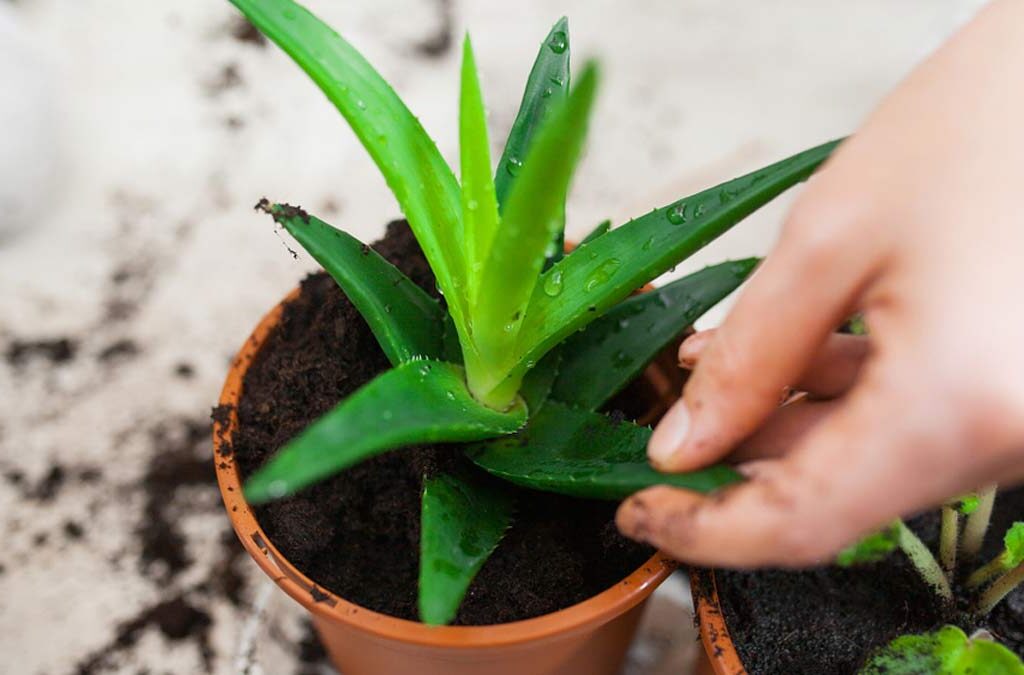
To fine-tune your aloe’s watering schedule, it’s essential to consider these factors:
Climate and Temperature
- In hot, dry climates, water more frequently (every 2 weeks).
- In cool, humid climates, water less often (every 3–4 weeks).
Seasonal Changes
Aloe vera’s water requirements vary with the seasons:
- Spring and summer: Active growth phase, needs more water.
- Fall and winter: Dormant period, less water is needed as plant growth slows down.
Indoor vs. Outdoor Placement
- Outdoor aloe plants exposed to sun and wind dry out faster.
- Indoor aloe plants in temperature-controlled rooms require less frequent watering.
Soil Type
Aloe vera thrives in well-draining soil. A mix of cactus potting soil or regular soil combined with sand or perlite ensures quick drainage, preventing root rot.
Pot Material
- Terracotta and clay pots wick away moisture, causing soil to dry faster.
- Plastic or ceramic pots retain water longer.
Always ensure your pot has a good drainage hole at the bottom.
Signs Your Aloe Vera Needs Watering
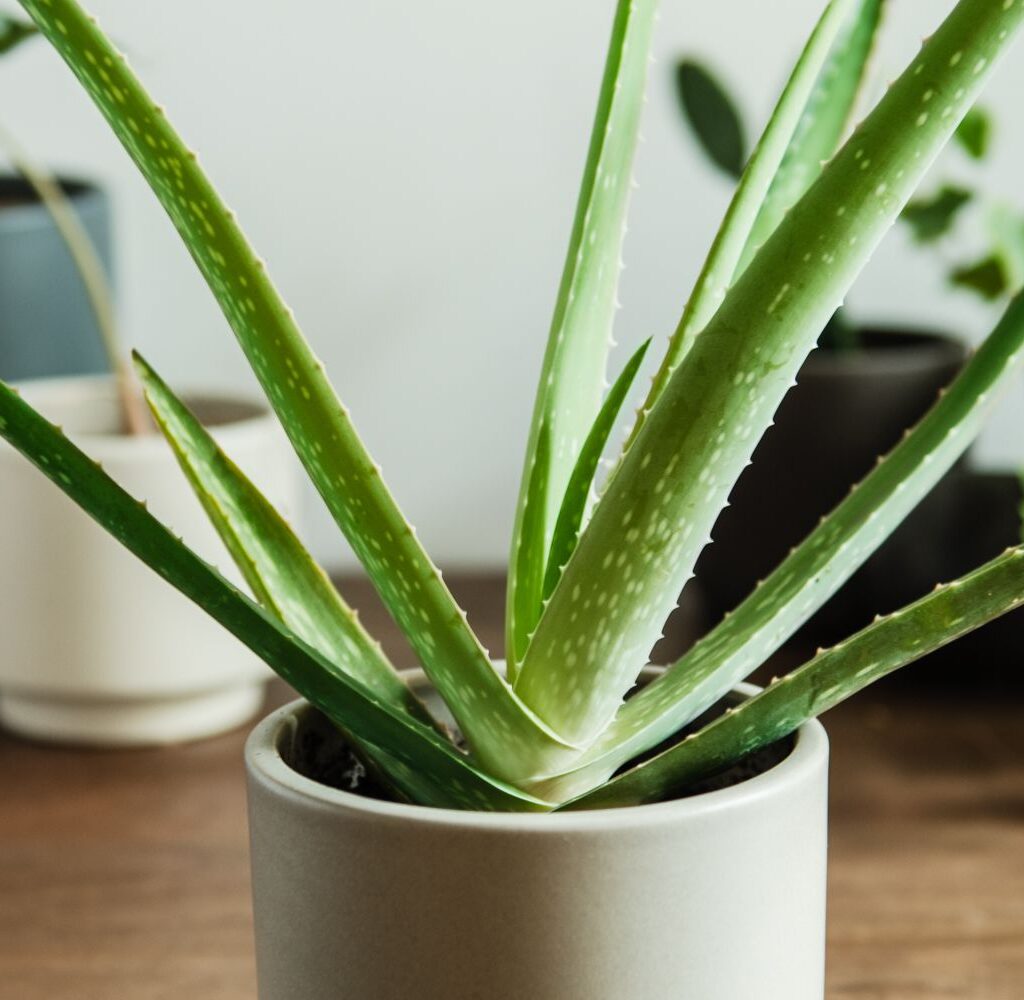
Knowing when your aloe is thirsty helps avoid mistakes. Look for these signs:
Dry, brittle, or shriveled leaves
When the leaves start losing their plumpness and look thinner or wrinkled.
Soil pulling away from the pot
Dry soil shrinks and pulls away from the edges of the pot.
Slow growth
Although aloe grows slowly, extremely dry conditions can stunt its growth.
Check the soil moisture by inserting your finger about 2 inches into the soil. If it feels dry, it’s time to water.
Signs of Overwatering an Aloe Vera Plant
Overwatering is the number one killer of aloe vera. Warning signs include:
Yellowing or soft, mushy leaves
A sign of root rot caused by excess water.
Leaves turning brown and translucent
Indicates cellular breakdown from too much water.
Foul odor from the soil
A rotten smell signals decaying roots.
If you notice these, stop watering immediately, remove the plant from its pot, trim off any rotting roots, and replant in fresh, dry soil.
How to Properly Water an Aloe Vera Plant
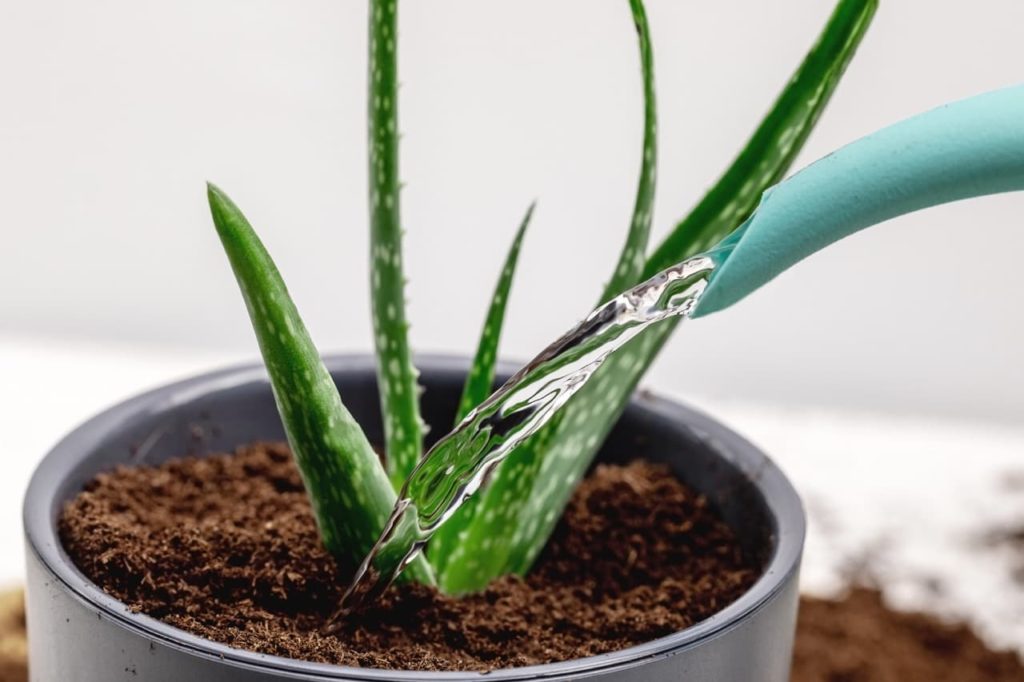
The right watering technique is just as important as frequency:
Use the “Soak and Dry” Method:
- Water thoroughly until water runs out from the drainage holes.
- Let the soil dry out completely before the next watering.
Pro tip: Avoid misting aloe leaves. It prefers dry foliage and can develop rot if water accumulates between the leaf bases.
Best Type of Water for Aloe Vera
Use room temperature tap water. If your tap water is highly chlorinated or hard, let it sit out for 24 hours before using it, or use distilled water to prevent mineral buildup in the soil.
Aloe Vera Watering Schedule Examples
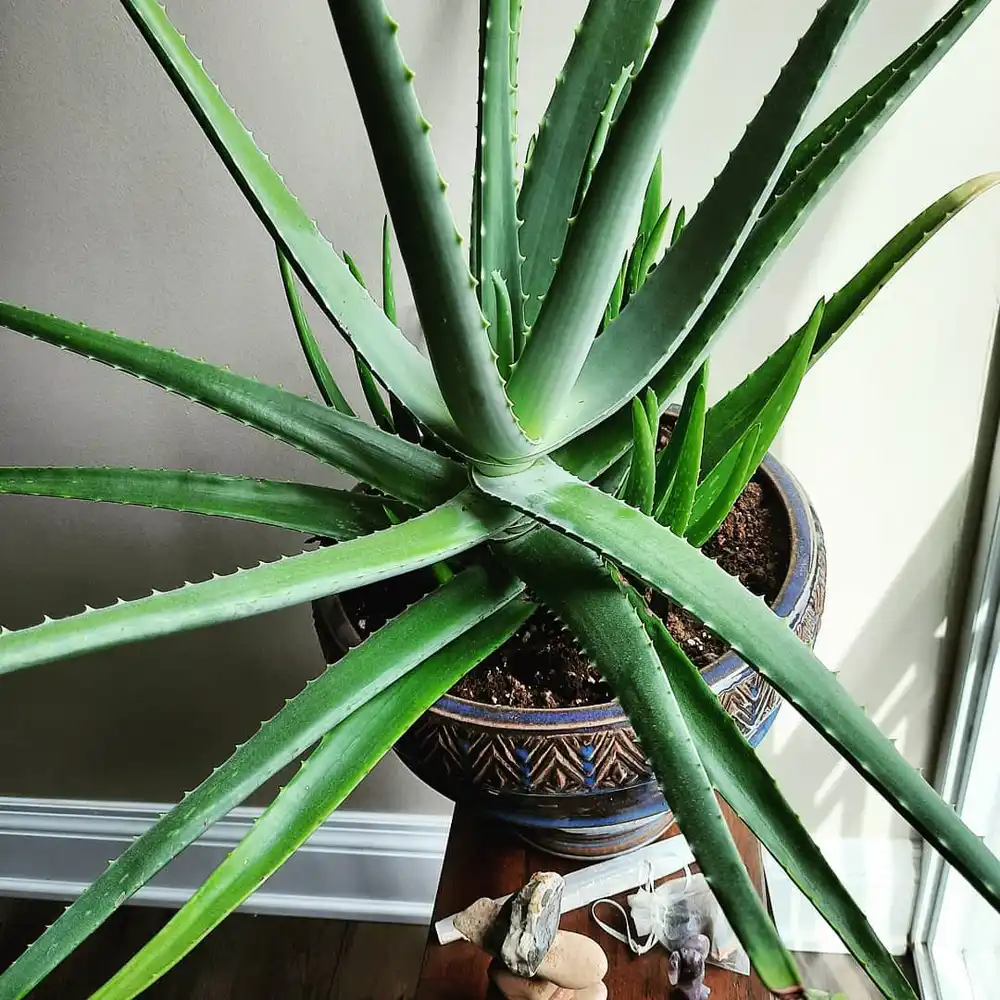
Here’s a rough guideline for watering based on seasons and conditions:
| Season | Indoors (AC Room) | Outdoors (Sunny Area) |
|---|---|---|
| Spring/Summer | Every 2–3 weeks | Every 1–2 weeks |
| Fall/Winter | Every 3–4 weeks | Every 2–3 weeks |
Adjust if the soil dries faster or slower.
Additional Aloe Vera Care Tips
Watering is just one part of aloe vera care. Here’s how to keep your plant happy:
- Light: Place it in bright, indirect sunlight indoors or partial shade outdoors.
- Soil: Use a cactus or succulent mix with added perlite or sand.
- Pot: Choose terracotta or clay pots with good drainage.
- Fertilizing: Feed once in spring and once in mid-summer with a diluted, balanced succulent fertilizer.
- Repotting: Every 2–3 years or when roots outgrow the pot.
Why Aloe Vera Loves Being Underwatered
Succulents like aloe vera have evolved to store water in their leaves, allowing them to survive prolonged droughts. While underwatering might slightly stress the plant, it’s far less harmful than overwatering, which can lead to irreversible root rot.
A moderately dry aloe will bounce back quickly when watered, but an overwatered one may not recover.
Conclusion
Aloe vera’s forgiving nature makes it one of the easiest plants to grow, provided you don’t overwater it. As a rule of thumb, it’s better to underwater than overwater.
Water your aloe vera plant every 2–3 weeks during the growing season and every 3–4 weeks in winter, adjusting based on your climate, indoor conditions, and soil dryness. Always use well-draining soil and a pot with drainage holes to prevent water from stagnating.
With a bit of attention and the right watering habits, your aloe vera plant will stay vibrant, healthy, and ready to offer its soothing gel whenever you need it.

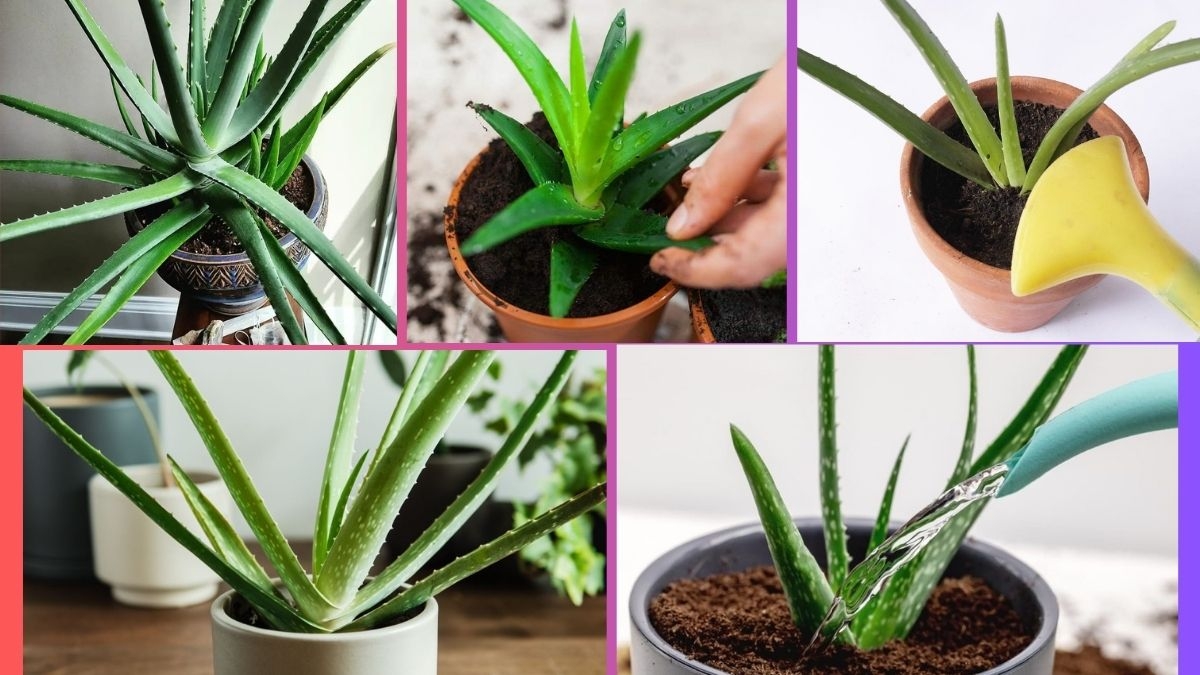



Leave A Comment